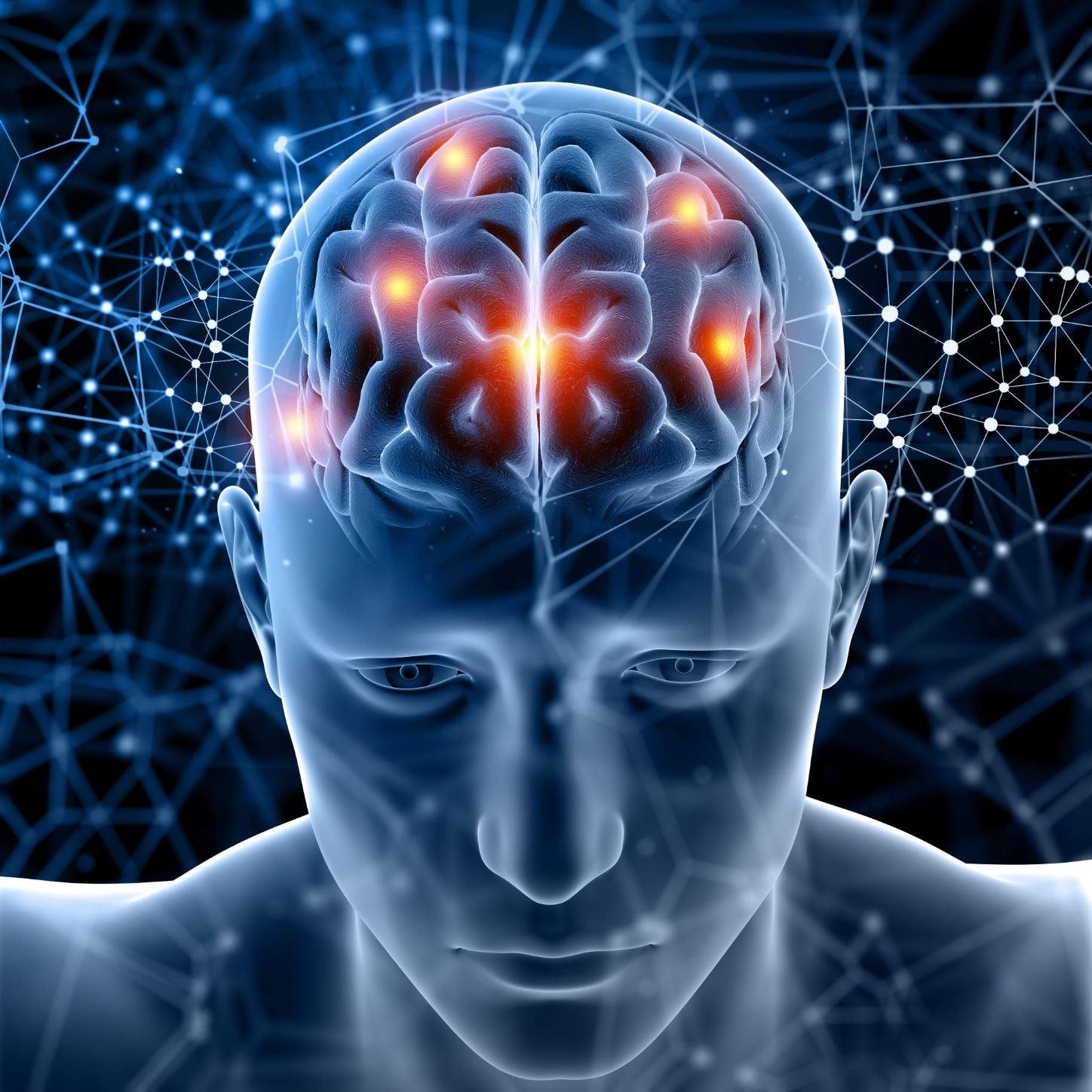
Human Brain Anatomy at a Glance
The human brain is unique in its anatomy. The brain consists of billions of nerve cells that are interconnected in complex ways. Nevertheless, the brain can be easily divided into different components and areas, some of which can be assigned specific functions. This article provides you with an overview of the anatomy of the human brain.
Rough Division of the Brain into 5 Parts
Human brain anatomy can be described in various ways. First, it makes sense to consider the brain (Encephalon) divided into five main regions. These five areas of the brain are recognizable to varying degrees in all vertebrates:
- Endbrain, often also called cerebrum (Telencephalon)
- Diencephalon (Diencephalon)
- Midbrain (Mesencephalon)
- Hindbrain (Metencephalon)
- Myelencephalon (Myelencephalon, also: medulla oblongata)
The designation of these main regions is based on the simple brain anatomy of lower vertebrates, in which the regions lie tubularly one behind the other. The human brain is more complex in comparison, but these five brain parts are still clearly recognizable despite further evolutionary development. To give you an idea of the human brain, we will look more closely at the five brain regions mentioned below and describe further classification possibilities within brain anatomy.
Endbrain and Diencephalon Form the Forebrain (Prosencephalon)
The forebrain consists of the endbrain and the diencephalon. The large cortex of the endbrain (cerebral cortex, cortex cerebri) is particularly characteristic of human brain anatomy. Its characteristic convolutions (gyri) and grooves (sulci) result in a significantly enlarged surface area, allowing the volume to remain relatively small.
The endbrain is composed of two hemispheres that are separated from each other by the fissure "Fissura longitudinalis cerebri". Deeper inside, however, they are connected by the so-called corpus callosum. In a frontal section of the brain, the gray and white matter of the hemispheres are visible.
The image "Brain Structure in Section" depicts brain anatomy in such a section. The outer gray matter consists mainly of the cell bodies of nerve cells and the inner white matter consists of nerve fibers.
The 4 Brain Lobes of the Endbrain
Both hemispheres can each be divided into four lobes based on certain grooves:
- Frontal lobe (Lobus frontalis)
- Parietal lobe (Lobus parietalis)
- Occipital lobe (Lobus occipitalis)
- Temporal lobe (Lobus temporalis)
As the name suggests, the frontal lobe is located at the front in the forehead area. The parietal lobe borders the frontal lobe from behind and extends to the occipital lobe located at the back of the head. The temporal lobe is located laterally below the parietal lobe. The position of the brain lobes corresponds to the similarly named cranial bones, as depicted in the image "Skull Bone Anatomy".
Functional Areas of the Cortex
The human cortex cerebri is particularly highly developed. It is responsible for characteristics
that make humans what they are. Certain functions can be assigned to some areas of the cortex. For example, areas that process information from the sense of hearing are located in the temporal lobe. In the occipital lobe is the primary visual cortex, which handles part of visual information processing.
The parietal lobe has areas of body perception that mediate skin, organs, muscles, and joints. The motor speech center and other motor areas are localized in the frontal lobe. There are also areas involved in personality formation.
The Structure of the Diencephalon
Between the hemispheres of the endbrain lies the diencephalon with the following structures:
- Thalamus
- Epithalamus with epiphysis
- Hypothalamus with neurohypophysis
- Subthalamus
The thalamus serves as a switching center through which almost all information flowing to the cortex passes. It is also called the "gateway to consciousness". You can see the position of the thalamus in the image "Brain - Sagittal Section". This shows brain anatomy in sagittal section, that is
in lateral view. The epithalamus sitting on top of the thalamus houses the pineal gland (epiphysis). This produces melatonin, known as the sleep hormone, and is thus involved in the sleep-wake rhythm.
The hypothalamus lies below the thalamus and is connected to the pituitary gland (hypophysis). The pituitary gland, which is co-responsible for hormonal control, is divided into the posterior lobe (neurohypophysis) and anterior lobe (adenohypophysis). However, the adenohypophysis, which is made up of glandular cells, does not count as part of the brain. The hypothalamus controls, among other things, the autonomic nervous system, but is also involved in emotional life.
The Limbic System Consists of Structures of the Forebrain
The limbic system represents another functional division within brain anatomy.
It includes brain structures that are responsible for controlling emotions. In addition, the limbic system performs important functions in learning and is in contact with the hypothalamus. It encases the corpus callosum, which connects the two hemispheres. The limbic system includes:
- Structures of the olfactory brain
- Amygdala
- Hippocampus
- Gyrus cinguli
- Gyrus parahippocampalis
Due to the close relationship between the olfactory brain and the other structures of the limbic system, smells, memories, and emotions are often linked together. The amygdala plays an essential role in the emergence of fear, while the hippocampus is significant for learning processes and is involved in aggression and motivation behavior.
The Anatomy of the Brainstem and Cerebellum
The midbrain, the pons of the hindbrain, and the myelencephalon form the brainstem (Truncus cerebri). The nuclei of the cranial nerves, fiber bundles of the hypothalamus, and long pathways of nerve cells are located there.
All three parts of the brainstem are connected to the cerebellum, which rests on the brainstem. The cerebellum is composed of the vermis (Vermis cerebelli) and also two hemispheres (Hemispheria cerebelli). Together with the pons, it forms the hindbrain and is responsible for balance, muscle tone, and coordination of muscle activity.
With the myelencephalon, the brainstem finally transitions into the spinal cord, with the gray and white matter rearranging. From a developmental perspective, the brainstem is the oldest part of human brain anatomy.
Share